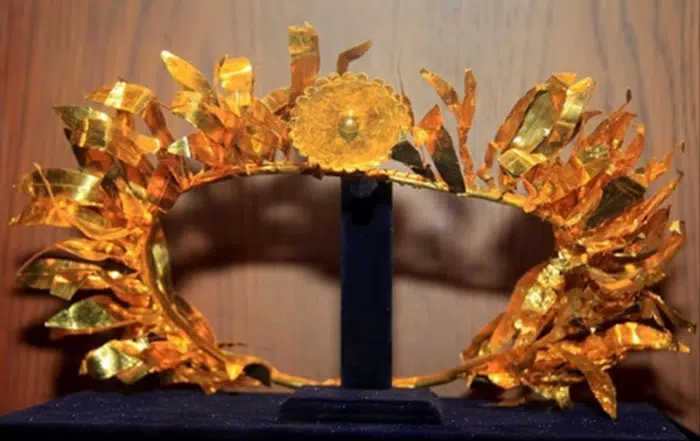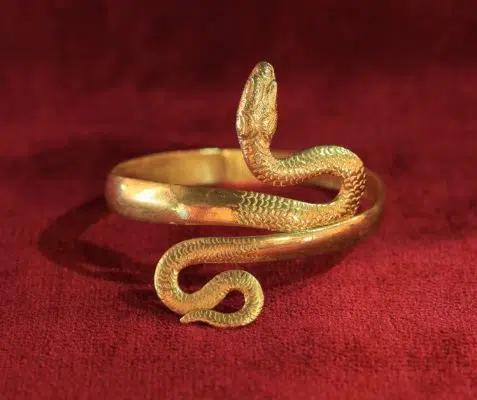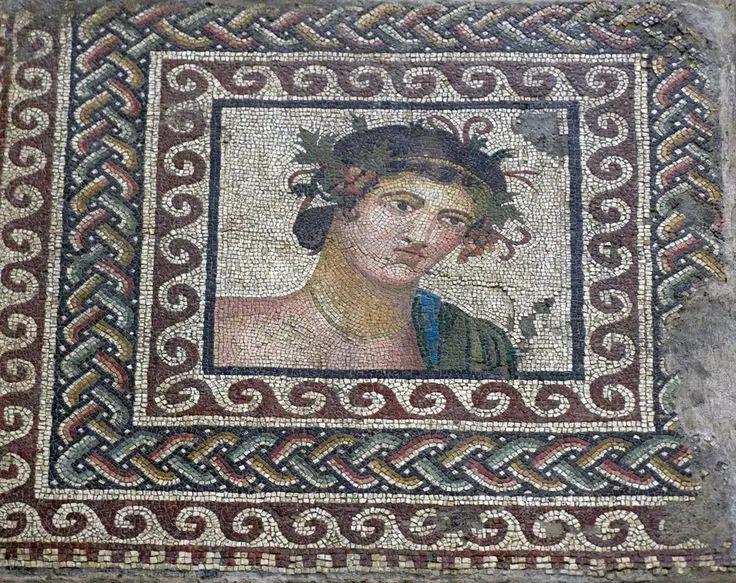
Ancient Greek treasures dated from the Kingdom of Pontus, a Hellenistic state located in the northeastern part of Anatolia, will be displayed in a new museum in the city of Samsun, Turkey.
Among the antiquities is the Amisos Treasure. It consists of 64 pieces, was found during a construction excavation in Samsun on Nov. 28, 1995, and is considered the most valuable treasure belonging to the dynasty members of the Pontus Kingdom.
It is stated that the history of the gold artifacts dates back to the 1st century B.C. and could have belonged to the sixth Pontus king, Mithridates Philopator Philadelphus.
The contents were: “a pure gold king’s crown, 15 gold buttons, four gold bracelets with human and animal figures on it, 18 broken gold bracelets, a gold barette, two gold earrings, 10 big gold necklaces, a gold ring with a gem, 24 necklaces, 424 beads, a glass bowl, four earthenware, three kerosene lamps and an earthenware plate.”

Treasures from the Pontus Kingdom, Roman and Byzantine times
The museum will also exhibit coins from the Classical, Hellenistic, Roman, Byzantine, Seljuk, Ottoman and Republican periods, jewelry, arches, sculptures, tombs and warship models from the Chalcolithic, Early Bronze, Hittite, Hellenistic and Roman periods.
Another highlight of the new museum is the Amisos Mosaic with a base size of 56 square meters. It is a remarkable ancient mosaic discovered in the Turkish city of Samsun, which was formerly known as Amisos in antiquity. The mosaic was unearthed during archaeological excavations in the area and dates back to the Roman period, around the 2nd or 3rd century CE.

The Amisos Mosaic is renowned for its intricate design and detailed craftsmanship. It depicts scenes from ancient Greek mythology, including images of gods, mythical creatures, and other figures. The mosaic is composed of colorful tesserae (small tiles) made of stone or glass, meticulously arranged to create vibrant and lifelike compositions.
The rise and fall of the Kingdom of Pontus
The Kingdom of Pontus along the southern coast of the Black Sea emerged in the 4th century BC after the collapse of the Persian Empire and the conquests of Alexander the Great.
The region was initially inhabited by various indigenous peoples but became heavily influenced by Greek culture following the arrival of Greek colonists and the establishment of Greek colonies along the Black Sea coast.
Pontus reached its peak under the rule of Mithridates VI Eupator, also known as Mithridates the Great, who reigned from around 120 BCE to 63 BCE.
Mithridates was a formidable ruler who expanded Pontus’ territory through military conquests and alliances. He also resisted Roman expansion into Anatolia, leading to a series of conflicts known as the Mithridatic Wars between Pontus and the Roman Republic.
Despite Mithridates’ efforts, Pontus eventually fell to the Romans, with Mithridates being defeated by Roman general Pompey the Great in 63 BCE. The kingdom was then incorporated into the Roman Republic’s territories as a client state.
The region continued to be significant during the Roman and later Byzantine periods, but the Kingdom of Pontus as an independent entity ceased to exist after its conquest by Rome.
See all the latest news from Greece and the world at Greekreporter.com. Contact our newsroom to report an update or send your story, photos and videos. Follow GR on Google News and subscribe here to our daily email!



